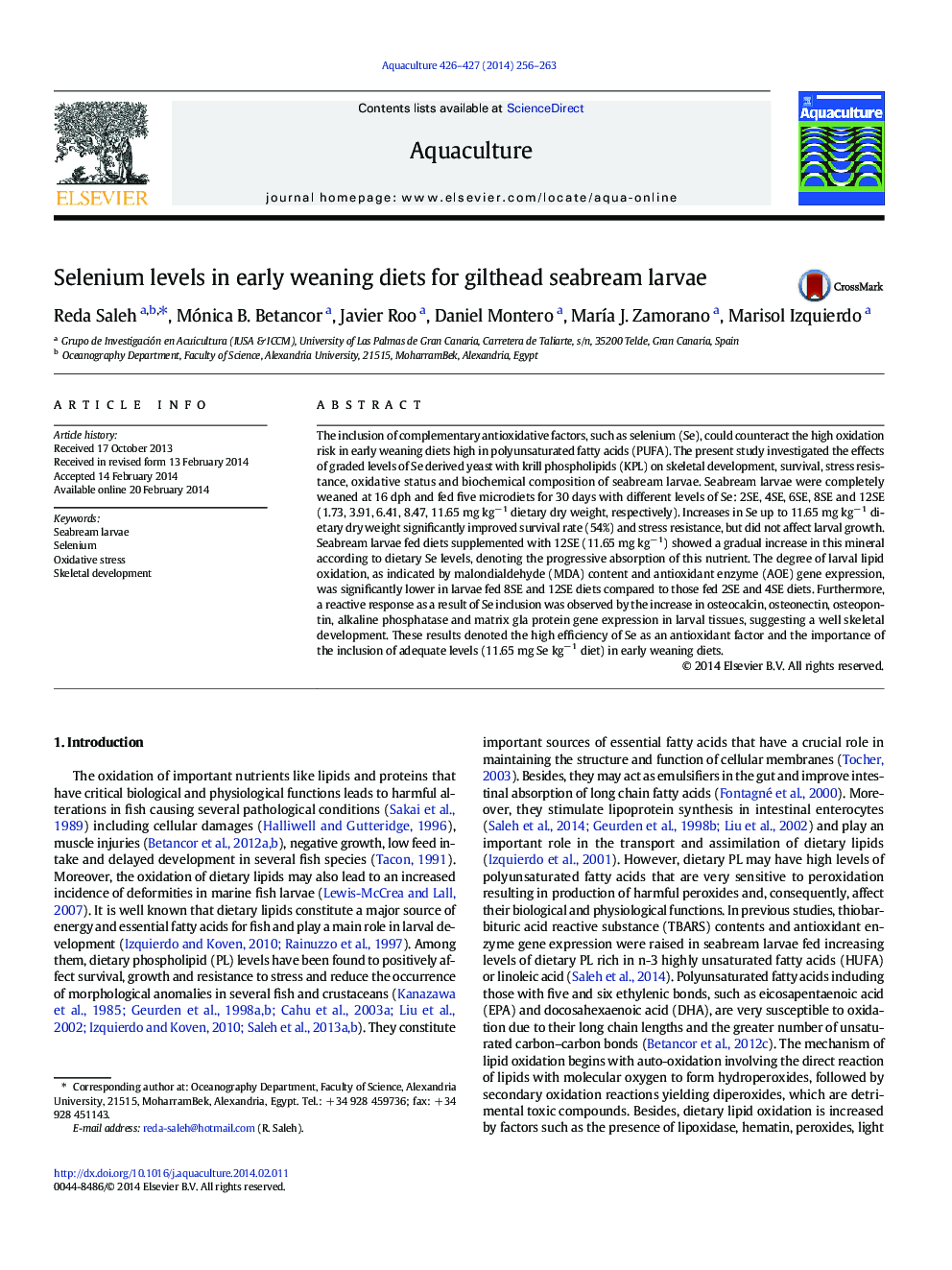| Article ID | Journal | Published Year | Pages | File Type |
|---|---|---|---|---|
| 8495152 | Aquaculture | 2014 | 8 Pages |
Abstract
The inclusion of complementary antioxidative factors, such as selenium (Se), could counteract the high oxidation risk in early weaning diets high in polyunsaturated fatty acids (PUFA). The present study investigated the effects of graded levels of Se derived yeast with krill phospholipids (KPL) on skeletal development, survival, stress resistance, oxidative status and biochemical composition of seabream larvae. Seabream larvae were completely weaned at 16 dph and fed five microdiets for 30 days with different levels of Se: 2SE, 4SE, 6SE, 8SE and 12SE (1.73, 3.91, 6.41, 8.47, 11.65 mg kgâ 1 dietary dry weight, respectively). Increases in Se up to 11.65 mg kgâ 1 dietary dry weight significantly improved survival rate (54%) and stress resistance, but did not affect larval growth. Seabream larvae fed diets supplemented with 12SE (11.65 mg kgâ 1) showed a gradual increase in this mineral according to dietary Se levels, denoting the progressive absorption of this nutrient. The degree of larval lipid oxidation, as indicated by malondialdehyde (MDA) content and antioxidant enzyme (AOE) gene expression, was significantly lower in larvae fed 8SE and 12SE diets compared to those fed 2SE and 4SE diets. Furthermore, a reactive response as a result of Se inclusion was observed by the increase in osteocalcin, osteonectin, osteopontin, alkaline phosphatase and matrix gla protein gene expression in larval tissues, suggesting a well skeletal development. These results denoted the high efficiency of Se as an antioxidant factor and the importance of the inclusion of adequate levels (11.65 mg Se kgâ 1 diet) in early weaning diets.
Related Topics
Life Sciences
Agricultural and Biological Sciences
Aquatic Science
Authors
Reda Saleh, Mónica B. Betancor, Javier Roo, Daniel Montero, MarÃa J. Zamorano, Marisol Izquierdo,
